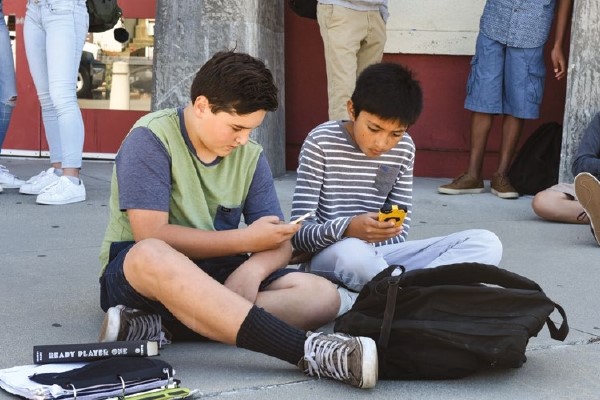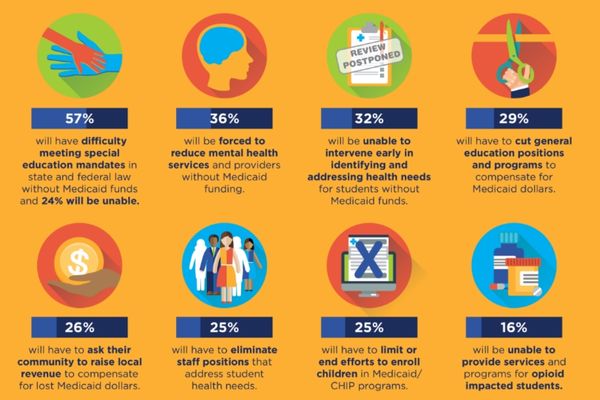Finding Balance Over Cellphones at School
April 01, 2017

When filming “Screenagers: Growing Up in the Digital Age,” a documentary about cellphone use by children, and now touring with the film, I always have been struck by one thing when I go to schools — how often teachers, students and parents are unclear on cellphone policies at school. When I inquire about this issue during classroom visits and breaks, the answers range from “cellphones are not allowed” to “actually I don’t really know.”
Clearly, many school systems are lacking strict and well-publicized guidelines when it comes to use of personal technology on school property.
I have spent more than four years as a filmmaker, physician and mother of school-age children thinking about where cellphones fit into a child’s school experience. When are they truly helpful? When do they become overwhelming and distracting? Where do they belong during the school day and how effective are they as educational tools?
From my research and engagement in these issues, I have formed several observations. I’m sharing four of them relating to K-12 education.
The cellphone as stand-in for personal computer in school.
Recently, I heard about teachers in a large public middle school in California who acknowledged that students frequently were asked to use their phones in class to do research or access their classroom schedule. Even though many of these classrooms have computers, the teachers prefer to have the kids use their cellphones because the phones are quicker than the computers, and they don’t have enough computers to go around.
Teachers working in schools with one-to-one laptop programs tell me that students often forget to bring their computers to school, consequently requiring them to use their phones as a computer in class.
The need for parent education, too.
“Do you need a ride home from school today?” or “Will you be home for dinner?”
Parents now live in an era when communication comes fast and with little effort. It can be hard for parents to resist the impulse of the need to know now. At times, it may feel that the minute a question is posed, an answer materializes. These answers come faster and faster thanks to new iterations of artificial intelligence. Consider Apple’s Siri and Amazon’s Echo. So why wait?
How can adults teach our children to plan ahead? That ability lies in the executive functioning part of the brain. It’s a skill that needs teaching and reinforcing. We should be modeling good executive functioning skills by talking to our kids at night about the next day’s transportation plans and appointments rather than relying on in-the-moment texting during the day.
I’ve found that the more vocal the parent is, the better these issues get addressed. Some parents will get upset with educators over the idea they cannot reach their children at any point of the day. Of course, if a matter is a genuine emergency, parents can call the school office and ask a staff member to relay the message.
The creation of balance in the classroom.

Teachers today face unprecedented challenges. Many puzzle over how to engage students who have become accustomed to high levels of entertainment, the source of which is as close as a pocket or backpack. Teachers realize parents can be their greatest allies or most vexatious offenders when it comes to student cellphone use in the classroom.
Schools across the United States have tried implementing various strategies for cellphone use schoolwide and in the classroom. In 2006, the New York City Public Schools tried banning phones altogether. While the measure was repealed in 2015, teachers have established their own rules regarding technology in class.
Although some worry about the liability of being responsible for the lost or stolen phones that students have been forced to forfeit during class time, other teachers have no quandaries about reminding students to put away their phones or check them at the door. In “Screenagers,” a teacher from Roosevelt High School in Seattle, Wash., holds up a child’s play phone with its flashing lights, loud buzzing and vibrant colors. “This,” she declares emphatically, “reminds students how distracting their phone is.”
I have seen some schools enacting more technical restrictions to stop cellphone distractions. One school I heard about began limiting student access to certain sites, including social media sites. This school has no cellphone service, so students are unable to use their data plans to get around site restrictions, yet many other schools are contending mightily with this issue.
Encouraging conscientious cellphone use.
Many teachers believe that encouraging students to police themselves emphasizes the autonomy required in the work world. The reality is that the siren call of technology is not heard by children alone. This is an adult problem, too.
Some teachers I’ve met argue that the sooner students are able to regulate their own attention and learn how to, as one teacher put it, “use their time wisely,” the more successful they will be later on. Indeed, studies show that willpower is a greater predictor of success than intelligence. Children who have a more developed sense of self-control do better in school and tend to have more successful relationships.
For the student, I am concerned that rather than having school be a place to teach self-control around cellphones, we are setting up students to believe that they are failures at self-policing — thus fostering a sense of helplessness when it comes to self-control. If students are in a lecture-based class, in a subject that does not engage them, and they are sitting in the back of the classroom with a device that has fun games, a messaging tool to connect to friends and much more, can they be reasonably expected to exert self-control when it comes to their phone?
The crux of the issue is finding the appropriate balance between promoting self-control and autonomous willpower, while constructing a school environment that fosters students’ ability to make these choices. Furthermore, if we give children who are too young cellphones, we are setting them up for failure.
After hearing from students of all ages who have seen “Screenagers,” one thing that stands out is that they are highly interested in the scientific studies behind their tech use. Sharing known research with students, such as a study indicating that just having a cellphone out on their desk degrades their academic performance, can be helpful to students’ understanding. One such study compared college students who received a large number of text messages while learning new material to students who received only a few texts. Those with the most texts scored a full letter grade lower on a test of the material than students who received the fewest messages, according to a 2011 study in Psychology Today. The key is making students and teachers mindful and curious of the pros and cons of how and when cellphones are used in schools.
Author
Advertisement
Advertisement
Advertisement
Advertisement




